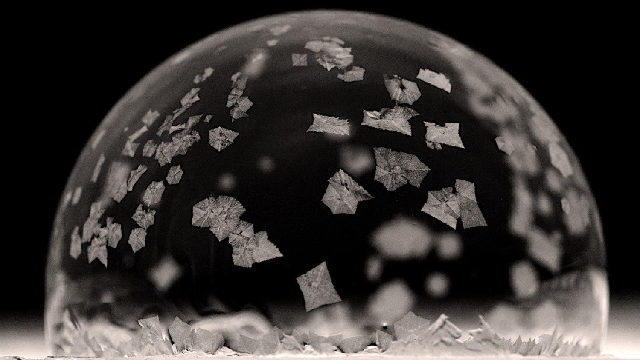Temperature governs crystal formation and movement in freezing suds.
This short article would work well alongside Chemical and Physical sciences for years 8, 9, and 10, as well as Senior Secondary Sciences.
An interactive activity and suggested class experiment are included.
Word Count: 259

Under the right conditions, soap bubbles freeze in a way that converts them, temporarily, into tiny, beautiful snow-domes.
The phenomenon was discovered by researchers led by biomechanical engineer Jonathan Boreyko from Virginia Tech in the US as they probed the physics of freezing.
Writing in the journal Nature Communications, the scientists report finding that the way soap bubbles froze was determined by the temperature of the air surrounding them.
In circumstances where bubbles resting on a cold substrate were surrounded by equally cold air they started to freeze from the bottom. However, during the early stage of this process, ice crystals formed, detached from the freeze-front and floated around in the remaining liquid, evoking a snow-dome.
After a while the number of crystals reached a critical density at which they were in contact with each other. At that point they locked together, forming a matrix, resulting in the entire bubble solidifying.
In cases where the ambient air was warmer than the cold surface on which the bubble rested, the freezing process was different and the results much less pretty. Again, freezing started from the bottom and continued upwards until convection forces became too weak, leading to a halt about halfway up.
The half-frozen bubbles then remained in equilibrium for a while before collapsing.
The key to the snow-dome effect, Boreyko and colleagues explain, is a phenomenon known as the Marangoni flow. This causes liquid to flow from areas of low to high surface tension, propelling, in this case, tiny soapy ice crystals into swirls and spirals for a while.
Login or Sign up for FREE to download a copy of the full teacher resource





